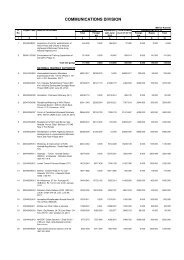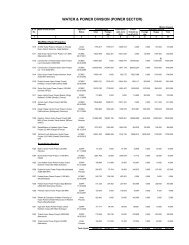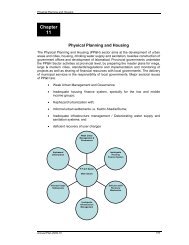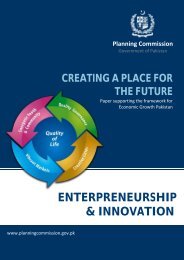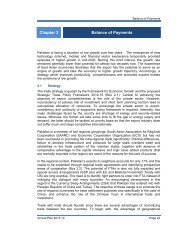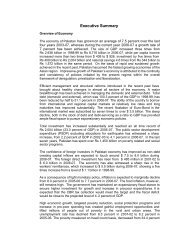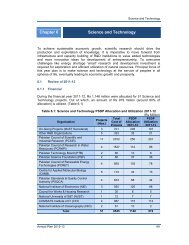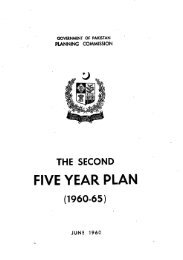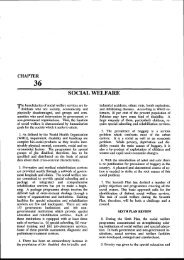Framework for Economic Growth, Pakistan - Planning Commission
Framework for Economic Growth, Pakistan - Planning Commission
Framework for Economic Growth, Pakistan - Planning Commission
Create successful ePaper yourself
Turn your PDF publications into a flip-book with our unique Google optimized e-Paper software.
International conference on “<strong>Framework</strong> <strong>for</strong> <strong>Economic</strong> <strong>Growth</strong>, <strong>Pakistan</strong>”Session 7: Youth and Community EngagementSpeaker: Mahbub HossainExecutive Director, Bangladesh Rural Advancement Committee (BRAC)First of all I would like to thank <strong>Planning</strong><strong>Commission</strong> and UNDP <strong>for</strong> giving meopportunity to participate in this conferenceand to share our experience about civilsociety engagement, youth and communityengagement.I started my career in Karachi as staffeconomist of the <strong>Pakistan</strong> Institute ofDevelopment <strong>Economic</strong>s. As an NGO weare working in Bangladesh. We have alsostarted work in <strong>Pakistan</strong>. Sinceindependence in 1971 we reducedpopulation growth from 3.0% in 1970s to1.3% in 2010. We have achieved selfsufficiencyin rice production from largeimport dependence. Under five years agemortality has reduced from 148 in 1990 to52 in 2009. Our net primary schoolenrolment has reached to 94 percent and wehave achieved gender parity in secondaryschool participation. Poverty rate has beenreduced from 76% in 1973 to 31% in 2010.A driver behind the progress is thegovernment giving space to civil societyorganizations as partners of development,particularly <strong>for</strong> inclusive growth.Bangladesh is a country of large NGOs suchas Grameen Bank and BRAC etc. NGOshave been working <strong>for</strong> reachingmicrofinance, education, health, hygiene,nutrition and community empowermentservices to marginalized people, especiallywomen.BRAC was established in 1972 as a relie<strong>for</strong>ganization to resettle refugees returningfrom India. Later it turned into a “not <strong>for</strong>profit” development organization whichoperates in 9 countries outside Bangladeshto share knowledge and experience with abudget of US $ 495 million in Bangladeshand US $130 million in BRAC International.BRAC employs 54,000 core staff, 45,000teachers and health workers, and 89,000community health volunteers.Youth development is an important subject<strong>for</strong> socio-economic growth of any country.At 1.4 billion population in world (0.5billion in South Asia) youth in developingcountries constitute almost a quarter of thepopulation and growing at 1.8% per year.Investing in youth can accelerate the fightagainst poverty, socio-economic disparityand gender discrimination. Opportunitieslike access to education, gainfulemployment, or financial services remainslimited in many countries in the region.Youth must be equipped with appropriateskills, capacities and knowledge toeffectively deal with the present daydevelopment challenges – urbanization,migration, ethnic conflicts, HIV and AIDS,etc. Marginalized youth are at risk of beingengaged in crime, armed conflict andterrorism. Increased youth unemploymentthreatens civil unrest, safety and security ofpeople.In Bangladesh, civil society organizationsjoin hands with the Government <strong>for</strong> socialand economic empowerment of the youth.BRAC reaches over 1 million adolescentsand youth in Bangladesh to empower themthrough multiple interventions. BRAC istraining 260,000 adolescent girls onlivelihood skills and opens space <strong>for</strong> socialengagement with peers through AdolescentDevelopment Program. We are helpinggenerate employment and livelihood <strong>for</strong>240,000 adolescent girls and young women75




